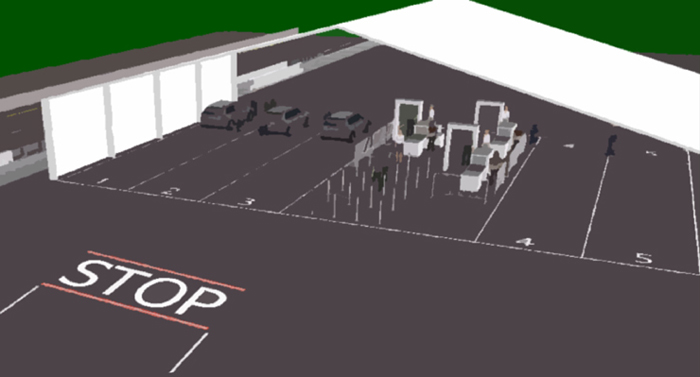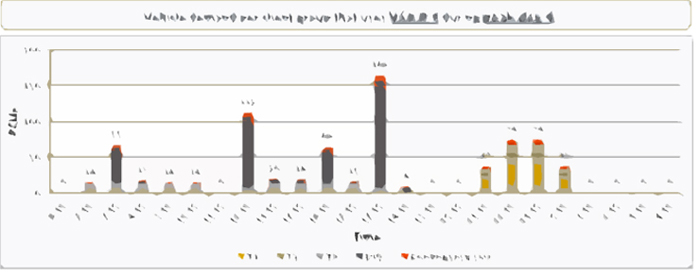Improving operations in Vehicle Screening Areas through simulation

The organizers of a major winter multi-sport event had planned for approximately 10 Vehicle Screening Areas in order to allow access to the secure perimeter of a main sports complex with multiple competition and non competition venues.
During the planning period, concerns had been raised regarding the location of the Vehicle Screening Areas and their ability to address the expected vehicle demand without long queues and waiting times.
Under this context, our client requested us to perform an analysis that would provide answers to the following questions:
- What is the peak usage by type of vehicle, day, and time of day for each Vehicle screening Area?
- Is there a need to re-distribute the load among other Vehicle Screening Areas?
- What is the required number of screening stations (for vehicles and passengers) in each area?
The way to problem solving
The first step was to estimate vehicle traffic. For this reason, we established a network of nodes and arcs to map the road network of interest.
For each arc of this network, we determined the vehicle flow intensity using i) the routes of the various client groups and ii) the corresponding flow intensities based on the estimated demand.
Then, we determined the vehicle load per quarter of an hour and for all event days for each Vehicle Screening Area.

Furthermore, we identified the peak usage of Vehicle Screening Areas and adjacent Pedestrian Screening Areas for the screening of passengers, as well as the possible bottlenecks based on nominal screening times.
Bottlenecks were further studied and measures, such as vehicle re-routing, were proposed to alleviate the significant loads.
We also used specialised software to simulate the operation of screening areas in order to determine the optimal number of resources and calculate a series of Key Performance Indicators, such as average waiting time and utilization of screening areas.
ImpactOur work resulted in the definition of the required number of stations in the screening areas that provide access to the secure perimeter of a major sports complex of a winter multi-sport event.
The recommended number of stations around the sports complex leads to an excellent service level with queuing times at the peak of less than 2.0 min and high station utilization (in most cases more than 80%).
In some areas, the initial requirements for screening stations were high and specific recommendations were made for rerouting part of the demand to other stations with less load. For the re-routed traffic, routes to the alternative VSAs and communication processes to achieve smooth rerouting were proposed.
Back
